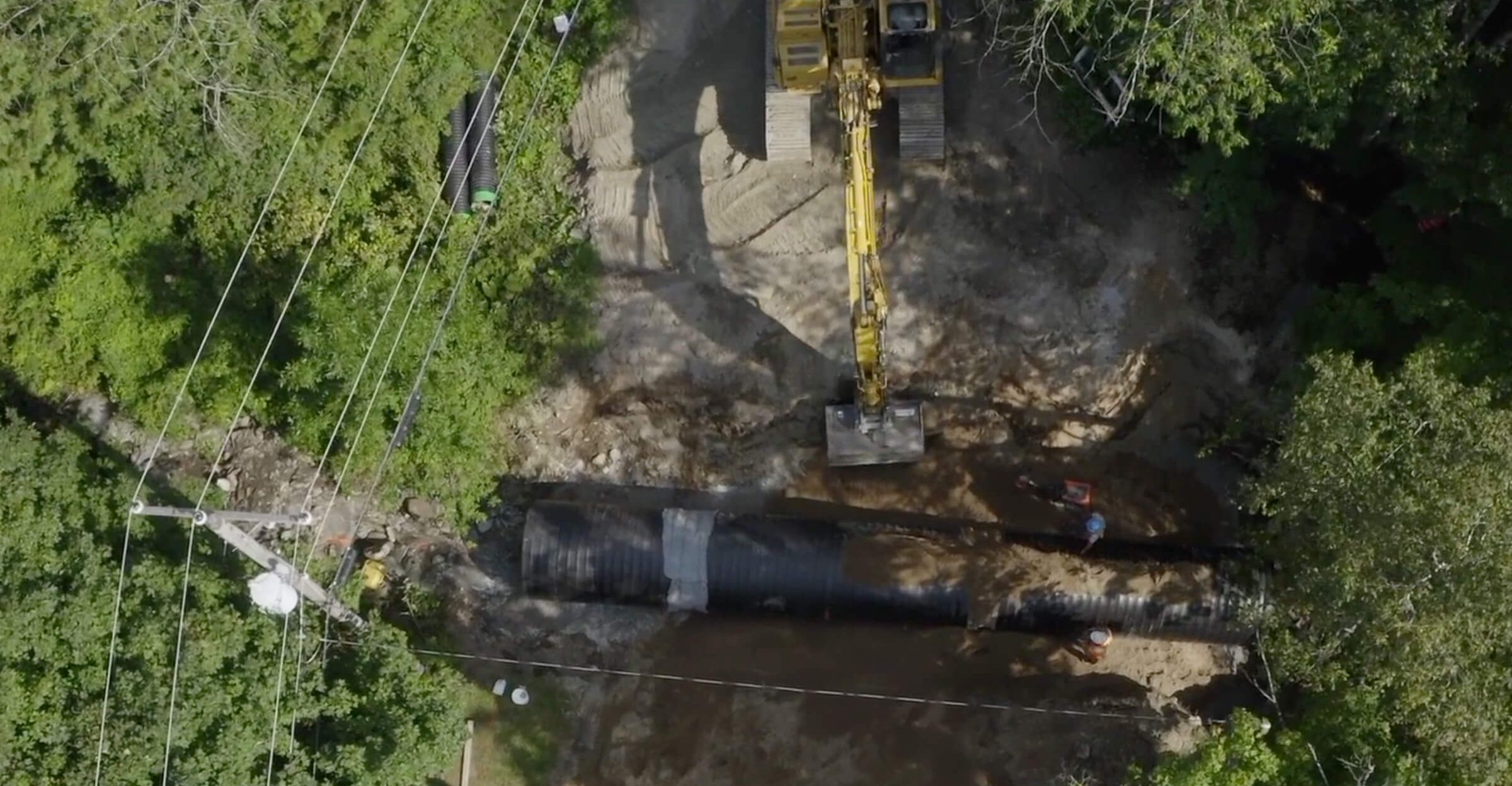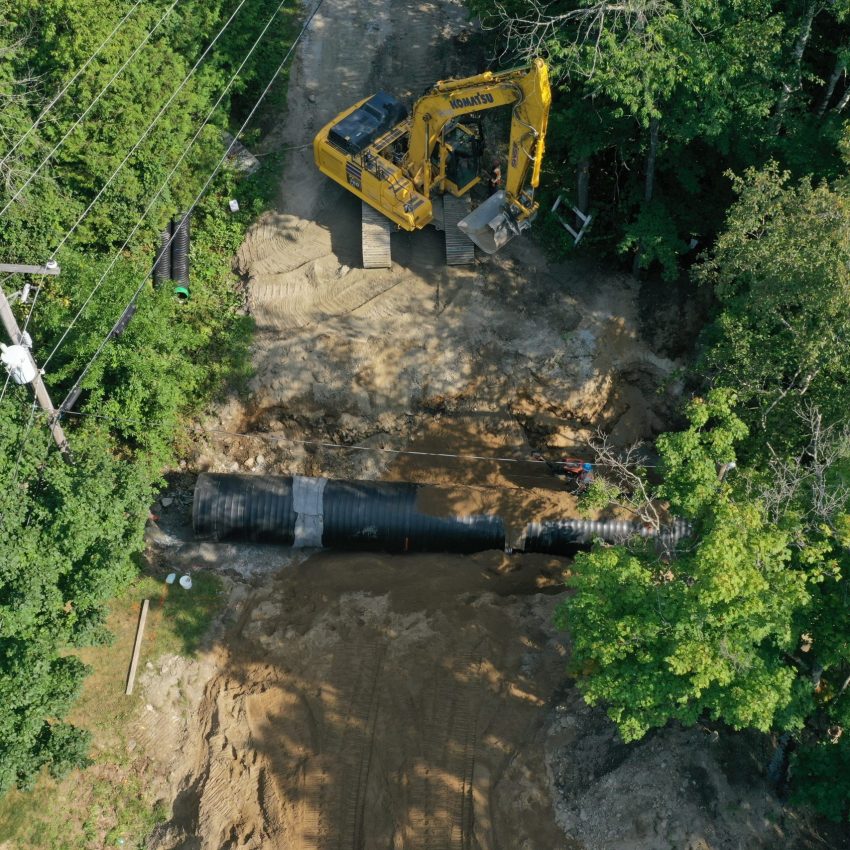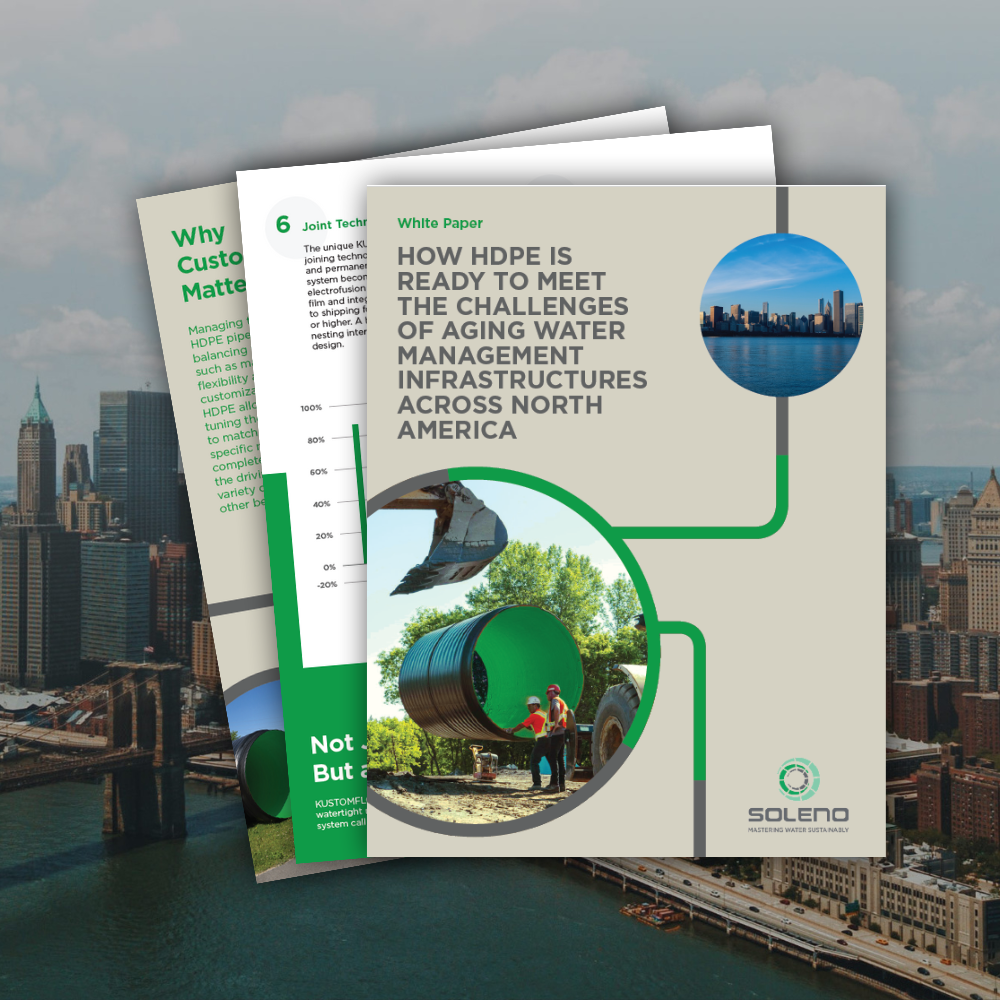
Rehabilitation of underground infrastructure – KUSTOMFLO Pipe
- PRODUCTS : KUSTOMFLO
- REALIZATION : 01/09/2021

As part of its underground infrastructure rehabilitation project, the municipality of Saint-Ferdinand needed to replace 11 old galvanized corrugated steel pipes (TTOG) with a diameter of 1500 mm, exhibiting corroded bottoms, along the Domaine-du-lac road.
See the video

For this complete rehabilitation project, the municipality of Saint-Ferdinand and the contractor decided to opt for a high-density polyethylene (HDPE) KustomFlo pipe with a diameter of 1800 mm.
In a culvert or storm sewer, the most frequent problems are often related to joints. By choosing KustomFlo pipes with a length of 5.7 meters, the number of joints is minimized compared with traditional 2.44-meter concrete pipes.
This project was made possible through the supervision of the Fédération des municipalités and their engineering department.
Discover KustomfloThe unique technology! KustomFlo pipes offer a different concept.
Unlike fixed standard solutions, KustomFlo pipes allow for the adaptation of pipe profiles to meet specific project needs and applicable standards. Over 100 different profiles available to meet all needs.
Lightweight, fast installation and resistance to de-icing salts are also advantageous features associated with HDPE KustomFlo pipes.

How HDPE is Ready to Meet the Challenges of Aging Water Management Infrastructures Across North America
While High-Density Polyethylene (HDPE) structured wall pipes are not new to the infrastructure industry of today, the material is not widely adopted for large diameter applications, despite certain distinct advantages over other materials. But as infrastructure systems around the world age, the need for sustainable and cost-effective solutions is becoming increasingly critical.
DOWNLOAD